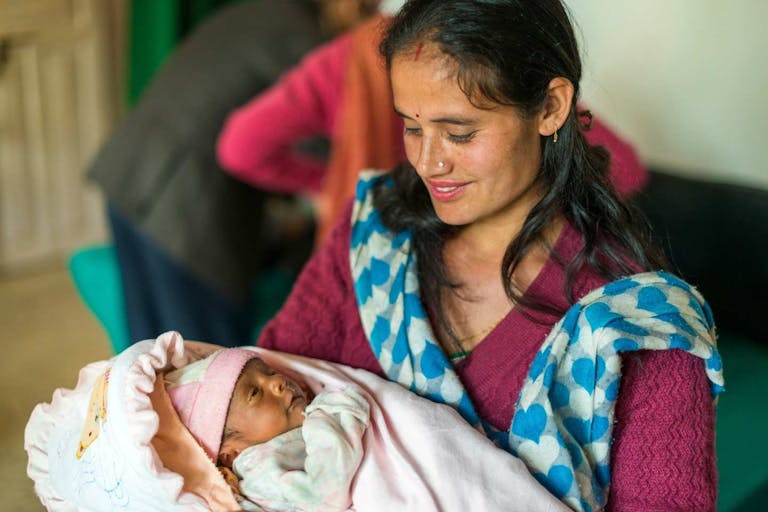
Nepal gender gap widens as sex-selective abortions continue to flourish
Cassy Cooke
·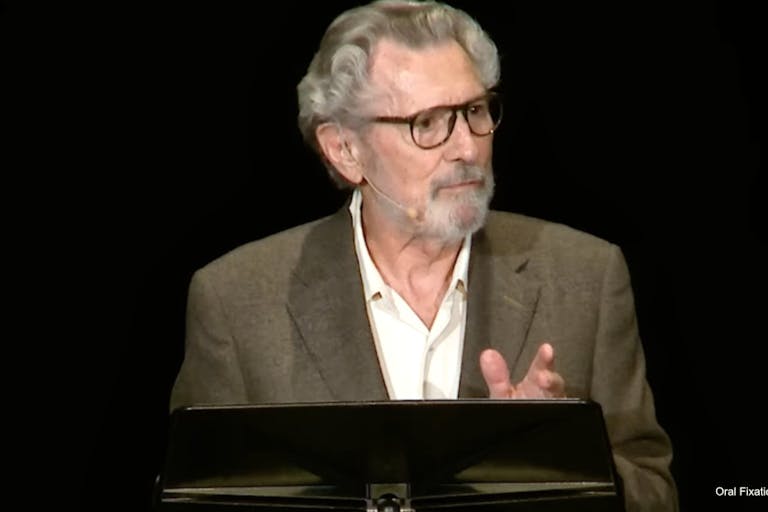
Late-term abortionist Curtis Boyd’s memoirs recall the one death that finally ended his career
Infamous late-term abortionist Curtis Boyd’s recently released book of memoirs, “We Choose To,” recounted two abortion-related deaths. Boyd seemed especially distressed over the medical malpractice lawsuit that came about after one of the deaths, referring to the event as having had an “emotional toll on our doctors and staff” — one that was “greater than I can calculate.”
Abortion Memoirs Released
The book, authored by Curtis Boyd and his wife Glenna Halvorson-Boyd, who worked by his side at his abortion business, claimed that the couple spent a good portion of their lifetime “providing abortion care before, during and after Roe.”
Boyd claimed he was a Baptist preacher, and he helped to establish the National Abortion Federation (NAF). He once admitted to WFAA in Dallas that he knows “I am killing” during abortions.

In an interview published at Huffington Post, Boyd explained, “I was becoming a humanist but I couldn’t just turn my back on my family and faith. I needed an honorable way out. I excelled in biology so medical school was the perfect solution. I applied to only one: UT Southwestern. Church had always given my life meaning and purpose. So once in Dallas I joined the Unitarian Universalists whose commitment to social justice matched my own.”
“I’d learned the value of counseling from the clergy,” Boyd claimed.
Notably, the Unitarian Universalist Church does not hold to any Christian creeds, and believes killing preborn human beings by abortion is a “moral and social good.”
Boyd admitted in a deposition that he had committed over 10,000 illegal abortions prior to Roe v. Wade. Shortly after the Supreme Court ruled on abortion in 1973, Boyd became known as one of the most prolific late-term abortion providers in the U.S., operating facilities in Texas and New Mexico.
“Blood and Guts” and ‘Lessons” of Abortion Complications
Boyd’s book details his pathway into later abortion provision.
“The ‘blood and guts’ aspect of medicine had never been a barrier for me,” he wrote. “Growing up on a subsistence farm, we had slaughtered farm animals and wild game as a routine part of life.”
Boyd prided himself on committing abortions safely, yet admitted that multiple complications occurred.
“Lesson one,” according to Boyd, was “avoid infection.” Boyd described his early days of abortion while in Athens, Texas, prior to Roe, explaining how he needed to send two women to the emergency room following early abortions.
Lesson two, “avoid perforation,” wrote Boyd. “My next medical complication happened early in my first year of working with the CCS [Clergy Consultation Services].” This patient was 11 weeks pregnant. “I will never forget the sinking feeling in the pit of my stomach when, as I finished her procedure, my instrument went deeper into her body than it should have…” Boyd admitted. “I had pushed through the wall of her uterus and entered the abdominal cavity with its major blood vessels and bowels. And I was in there blind.”
He later wrote, “As perforations go, this one turned out to be minor.”
Boyd wrote that, after “perfecting” his technique, “I came to think of my curette as an antenna of sorts, what I would come to think of as my ‘feeler.'”
He added, “Week by week I worked my way into the second trimester. Soon I was doing abortions at sixteen weeks with relative ease.”
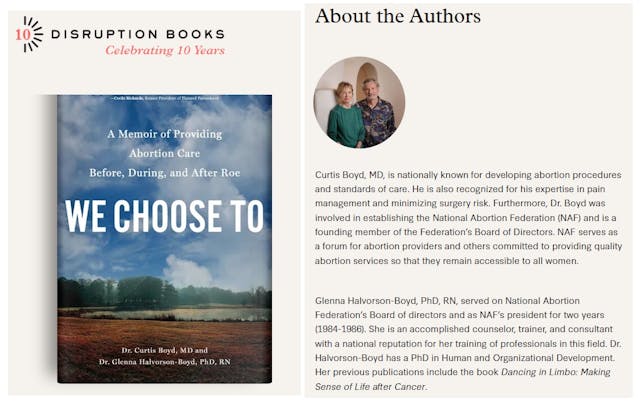
Lesson three: “prevent hemorrhage.” Here Boyd described “Betty,” likely a pseudonym, who was nearly “seventeen weeks pregnant and desperate.” Boyd wrote that “before I could remove the pregnancy, I had a basin full of blood… Betty was bleeding to death and I was terrified.” She was then transferred to a hospital and received multiple transfusions before the bleeding stopped.
“The next morning, she was stable, and we made a new plan,” Boyd wrote. “She wanted to go home to Dallas, and I could not finesse completing her abortion in Athens. She was to call her doctor, say she was having a miscarriage, and ask her to admit her to the Dallas hospital, where he could manage her care,” he wrote of his deception and patient abandonment. “I was only in my second year of performing illegal abortions, with no end in sight.”
Teaching Others
“When abortion became legal, I eagerly began to teach others so they could be spared my mistakes,” he wrote.
Boyd influenced other abortionists like Mildred “Millie” Hanson — a medical director of Planned Parenthood of Minnesota — and he recounted training third trimester abortionist George Tiller to commit abortions.
In addition, Boyd mentioned having meetings with Dr. Philip Darney (who founded the Bixby Center for Global Reproductive Health) as well as Uta Landy (founder of the Ryan Residency abortion training program at the University of California) during a 1990 symposium to address the “graying of abortion in America.”
“Between 1967 and 1973, I performed over fifty thousand abortions,” Boyd admitted.
Pioneering the D&E Procedure
“[S]econd trimester procedures presented special challenges,” Boyd wrote. “The first challenge was dilating the cervix widely enough to allow for safe removal of the larger pregnancy without damaging the cervix in the process.”
Calling it “this better procedure,” Boyd took credit for “pioneering a procedure known today as dilation and evacuation (D+E).” A D&E procedure is sometimes referred to as a “dismemberment abortion,” because it dismembers the preborn child piece by piece, and is usually utilized in the second trimester of pregnancy.

Boyd devotes numerous pages of his book to how he perfected the D&E, even utilizing the drug misoprostol shortly after it was developed in 1988.
“Today after fifty years of experience, I look back at my younger self and think my determination to create this better procedure was lunacy,” he added.
Despite Boyd’s claim, pro-abortion historians credit abortionists like Mildred Hanson and Warren Hern with the development of the D&E.
Abortion ‘makes me feel queasy’
“In 1974, I knew little about fetal development and even less about the medical risks that came with advancing gestation,” Curtis Boyd’s wife Glenna wrote. “For most staff members, who are clear in their intellectual commitment to abortion rights, it’s the sensory elements of abortion later in pregnancy that call their abstract commitment into question: How can abortion be right if it makes me feel queasy?” she wrote.
Glenna then described the 19-week abortion of a young girl, whose procedure was completed in the middle of the night after they inserted laminaria and she began to hemorrhage and experience a great deal of pain.
“Curtis was standing at the foot of the exam table, holding the intact fetus Amy’s body had just efficiently expelled before slipping it into a stainless-steel basin. He had the sad gaze I often saw when he performed second trimester abortion…”
Glenna described the dead fetus as “warm” and “so small that it nested in the palm of my hand.” She writes how the aborted child was then donated “to Southwestern Medical School…” for research — something she referred to as the “silver lining” for abortion patients.
“I could still feel the soft, warm fetus in my palm, and I caught myself thinking, They could have had a baby, It would have been born into such a loving family…” she wrote. “The potential of the fetus is far more visible in later-term abortion, and for both Curtis and me, it does hold value.”
Yet, it took a serious malpractice lawsuit before Boyd decided to leave these late-term abortions behind.
Abortion Staff “Burnout”
In the book, Glenna Boyd describes conducting NAF workshops on “burnout” and having a heated argument with a New York Times (NYT) reporter over the topic. “She provoked me to a heated rebuttal of the anti-abortion assertion that ‘killing babies every day’ was the cause of staff burnout,” Glenna wrote.
In a knee-jerk reaction, Glenna claims she faxed the reporter “my working notes,” which the reporter then used to write the article “Abortion Rights in Peril, Say Advocates at Conference.”
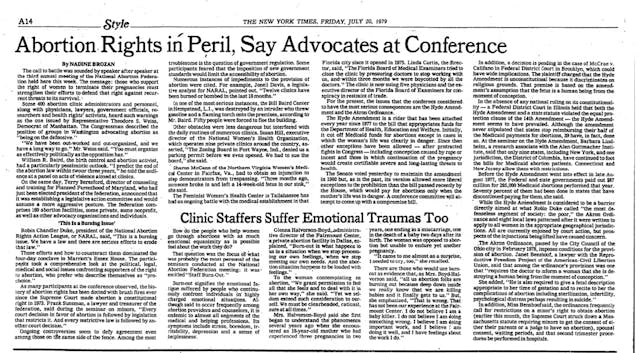
In a separate section, entitled “Clinic Staffers Suffer Emotional Traumas Too,” NYT cited Glenna as stating, “Burn‐out is what happens to us in a situation when we stop processing our own feelings, when we stop meeting our own needs. And the abortion situation happens to be loaded with feelings.”
That article ended with this: “There are those who would use burnout as evidence that, as Mrs. Boyd‐Halvorson said, ‘all us abortion folks are burning out because deep down inside we really know that we are killing babies and it finally gets to us.’ But, she emphasized, ‘That is wrong. That has not been our experience at the Fairmount Center. I do not believe I am a baby killer. I do not believe I am doing something wrong. I believe I am doing important work, and I believe I am doing it well, and I have feelings about the work I do.’”
As a result, Glenna claimed many NAF members were “outraged that I had dared to ‘air our dirty laundry’ about burnout.”
Abortion-Related Death #1: “Angela”
In the book, the Boyds speak about two abortion-related deaths, referring to the women by the fake names of “Angela” and “Rose.”
In the chapter, “Tumultuous Times,” Boyd referred to the seventh anniversary of Roe v. Wade in 1980 as “a date that had changed my life.” A 22-year-old abortion patient named “Angela,” whose “birth control method had failed,” came to him for an abortion.
“The process was going smoothly when she suddenly stiffened, then jerked[;] I heard gasping” Boyd wrote. “I moved to the head of the table [and] Angela was still.”
After attempting CPR, “Angela” started breathing, but “within minutes she suffered a second cardiac arrest,” he claimed. She stabilized and paramedics transferred her to Parkland Hospital.
Boyd wrote that during this time, he continued on with the scheduled abortions because he had a “full afternoon of surgical patients.” He said he later heard that “Angela had died,” and the Boyds were concerned this news might cause “a crowd of angry people” to show up at their abortion business.
“Angela” was a pseudonym for 22-year-old Vanessa Preston, who died on January 24, 1980, according to a report published by the Corpus Christi Times. That article quoted Curtis Boyd as saying, “This is the first death to one of our patients. It is tragic for her and her family, and it is sad for us.”
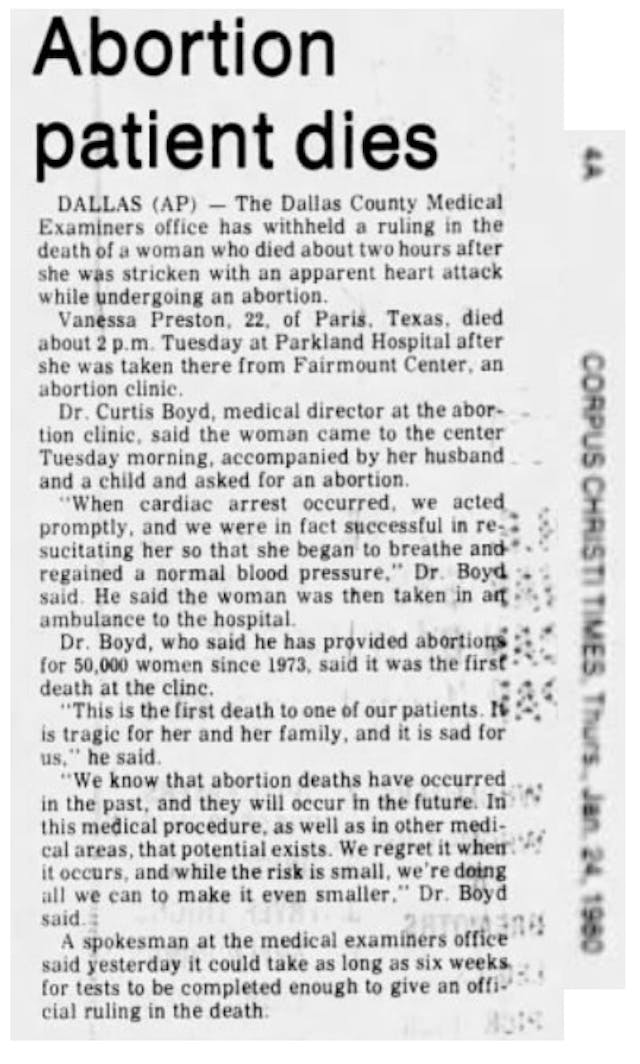
“I had such confidence in my ‘magic hands’ that I had taken my ability to manage technical challenges for granted,” Boyd wrote in his memoirs. “We know that abortion deaths have occurred in the past, and they will in the future. In this medical procedure… that potential exists.”
This is correct. According to the Centers for Disease Control and Prevention (CDC), the number of published abortion-related deaths has now risen to 460 deaths from legal abortion recorded by the CDC between 1973 and 2020, with additional amounts reportedly killed by illegal abortions.
“Angela” would not be the only woman to incorrectly believe abortion was “safe” in Boyd’s facility.
Abortion Related Death #2: “Rose”
“The predictable complications with the third trimester have occurred and, tragically, a second patient death… in 2017,” the Boyds wrote.
That woman, dubbed “Rose,” was actually 23-year-old Keisha Marie Atkins, who sought a late-term abortion from Shannon Carr, an abortionist who worked at Boyd’s Southwestern Women’s Option facility. Curtis Boyd was at a separate facility when Keisha’s death occurred.
“In contrast to the relative media calm around Angela’s death in 1980, this one was broadcast far and wide by anti-abortion websites,” the book claims.
The Boyds complained that “an anti-abortion attorney persuaded the patient’s mother to sue, and that suit attracted further adverse attention.” That medical malpractice attorney was Michael Seibel, who discovered that Atkins had been given the abortion pill regimen during her 24-week abortion as part of an experiment.
“Keisha Atkins was admitted to the University of New Mexico on February 3, 2017, after beginning a late-term abortion (24 weeks) at Southwestern Women’s Options on January 31, 2017. Even though her abortion was later in pregnancy, the abortion pill — Mifeprex— was utilized as part of Atkins’ abortion process, as was the second drug in the abortion pill regimen, misoprostol,” Seibel recently wrote in an op-ed.
During the multiple-day abortion procedure, Atkins was also administered fentanyl and Versed (midazolam), and was then sent to her hotel without any medical supervision. She returned to the abortion facility, where she went into respiratory distress, and was then sent to the hospital where she later succumbed to the sepsis caused by her abortion.
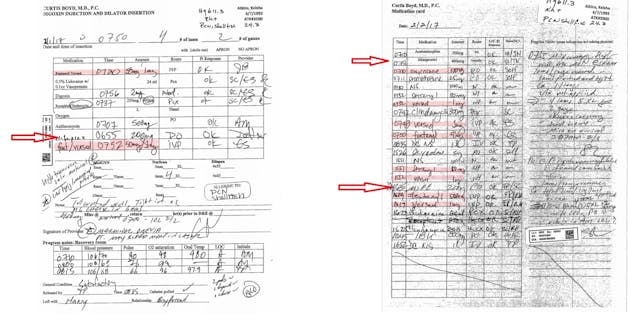
Atkins’ final operative report (warning: graphic) from the University of New Mexico hospital revealed postoperative diagnoses showing that she suffered from “respiratory distress” and “septic abortion.”
The wrongful death lawsuit brought by Seibel proved Curtis Boyd and his staff were responsible for Atkins’ death.
In 2022, the Albuquerque Journal reported that Southwestern Women’s Options settled with Atkins’ estate for the sum of $900,000. The University of New Mexico also settled in her family’s lawsuit for wrongful referral, paying $365,000 of the total amount awarded, which was $1.26 million.
Of the lawsuit brought by Atkins’ family, the Boyds wrote, “The personal and professional assault we had feared so many years earlier with Angela’s death did materialize in the end, and the emotional toll on our doctors and staff was – and still is – greater than I can calculate.”
After Seibel’s lawsuit, Curtis Boyd ended his third trimester abortion practices.
‘Godfather of Abortion’
In his book, “The Family Roe” author Joshua Prager reported that during his lifetime, Curtis Boyd committed approximately 250,000 abortions.
For this reason, Seibel dubbed Curtis Boyd the “Godfather of Abortion,” and emotionally referred to opposing Boyd as “fighting the greatest evil.”
While Seibel opposes this evil, he also told Live Action News, “Something I do every morning is pray for [Curtis Boyd].”
In 2023, months after the U.S. Supreme Court overturned Roe v. Wade in the Dobbs v. Jackson Women’s Health Organization decision, Boyd closed the Southwestern Women’s Surgery Center in Texas.
Then, less than a year later, Boyd stopped committing third trimester abortions and eventually sold the other abortion facility in Alburquerque, New Mexico, and has appeared to retire from this grisly business altogether.
Live Action News is pro-life news and commentary from a pro-life perspective.
Contact editor@liveaction.org for questions, corrections, or if you are seeking permission to reprint any Live Action News content.
Guest Articles: To submit a guest article to Live Action News, email editor@liveaction.org with an attached Word document of 800-1000 words. Please also attach any photos relevant to your submission if applicable. If your submission is accepted for publication, you will be notified within three weeks. Guest articles are not compensated (see our Open License Agreement). Thank you for your interest in Live Action News!

Cassy Cooke
·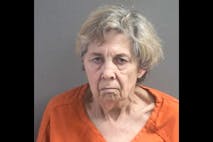
Analysis
Cassy Cooke
·
Politics
Cassy Cooke
·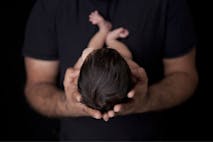
Analysis
Cassy Cooke
·
Analysis
Nancy Flanders
·
Newsbreak
Angeline Tan
·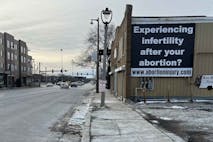
Investigative
Carole Novielli
·
Abortion Pill
Carole Novielli
·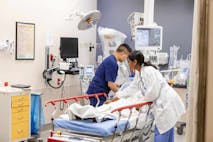
Abortion Pill
Carole Novielli
·
Investigative
Carole Novielli
·
Abortion Pill
Carole Novielli
·